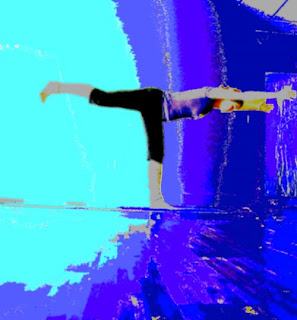At long last, I’m back with a new post. Today, we’ll talk about ahimsa, the foundational yama or moral restraint upon which all other practices grow. Ahimsa, quite simply, is the practice of living nonviolently. The sutras, as transliterated and translated by Mukunda Stiles, address the topic as follows:
“By abiding in nonviolence, one’s presecne creates an atmosphere in which hostility ceases.”
The practice of nonviolence has quite radical consequences in that through the action of nonviolence, you can feel a shift within yourself. In the simplest of terms, when you express pure, unadulterated kindness to others, you feel good. Doing good makes you feel good. On the other hand, treating others badly will perpetuate any negative feelings you already have within you. Ahimsa, thus, embodies a presence both with-in and with-out the practitioner. Conversely, the adage “world peace begins with you” takes on a second meaning: if you exercise nonviolence toward yourself, you’ll be better equipped to practice it in the world. (This is not a traditional interpretation of this sutra, as historically the yamas have been interpreted as restraints in our behavior toward others first and foremost. This has lead to lots of debate on the vegetarian topic. )
Ahimsa shares a strong connection with the hindu notion of karma (very simply, the cosmic notion of cause and effect). Karma dictates that the energy we put into the universe, both individually and collectively, comes back to us in some form or another until balance is achieved. Practicing ahimsa in thought, word and action removes us from the future bonds of karma. This is no small feat, however, when we begin to examine our lives through ahimsa-tinted lenses. The places we find ourselves “stuck” in the practice of ahimsa represent the karma we are challenged to work through in this lifetime.
As you practice today’s asana sequence, notice where your thoughts travel during the practice. If you begin to chastise yourself for the quiver in your quadricep or somesuch, remember ahimsa, and bring your mind back to your breath.
Namaste.
Warm-ups: table, bhaktasana, table, adho mukha svanasana with breath.
Variations on surya namaskar.
Tigress and parivrtta adho mukha svanasana.
Surya Namaskar A
Variations on prasarita padottanasana and malasana.
Standing sequence, featuring parsvakonasana and virabhadrasana three.
Sarvangasana, matsyasana, navasana, apanasana.
Jathara parivaratanasana, savasana.
 Om. Om. Om. shanti. shanti. shanti.
Om. Om. Om. shanti. shanti. shanti.
Namaste.

Im going to research Yogi. I want to start Yoga. I hope I can find a good video at wallmart.Thanks for the examples, I can do some at home if I remember.